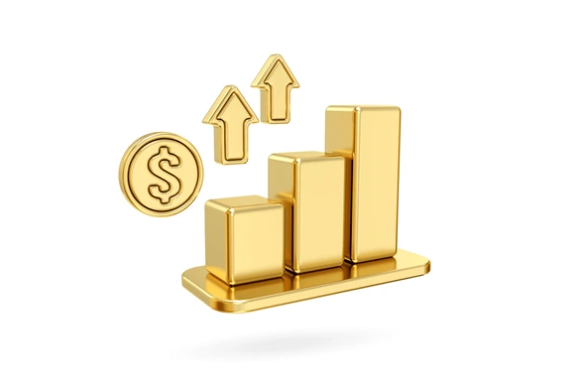In early February 2025, gold prices have experienced a remarkable surge, reaching record highs and capturing the attention of investors and analysts worldwide. This unprecedented rise is largely attributed to escalating geopolitical tensions, particularly the trade disputes initiated by President Donald Trump’s administration. As of February 10, 2025, gold prices have soared to nearly $2,900 per ounce, marking an 8.5% increase since the beginning of the year and a 30% rise from 2024.
Geopolitical Factors Influencing Gold Prices
The primary catalyst for this surge is the intensification of trade wars, with the U.S. administration contemplating significant tariffs on imports from China, Mexico, and Canada. These potential tariffs have heightened market uncertainties, prompting investors to seek safe-haven assets like gold. Goldman Sachs strategists have advised investors to consider commodities such as gold to protect their portfolios from risks associated with these geopolitical developments.
Central Bank Purchases and Investment Demand
Central banks have also played a pivotal role in driving gold demand. In 2024, central banks and other institutions purchased 1,044.6 metric tons of gold, slightly down from 1,050.8 metric tons in 2023 but still surpassing the yearly average from 2010 to 2021. This sustained buying trend underscores the strategic importance of gold in diversifying reserves and hedging against economic uncertainties.
Impact on Gold Mining Companies
The surge in gold prices has significantly benefited gold mining companies. For instance, Evolution Mining’s chief executive, Lawrie Conway, noted that the price increase has been accelerated by President Trump’s return to the U.S. presidency, leading to substantial gains for ASX-listed gold stocks. Northern Star and Evolution have seen their stock prices rise by 18.5% and 23.5%, respectively, since the beginning of 2025.
Investor Considerations
While the current environment presents lucrative opportunities for gold investors, it is essential to approach with caution. The rapid ascent of gold prices has led to overbought conditions, as indicated by technical analysis tools like the Relative Strength Index (RSI). Traders should remain vigilant for potential market corrections and consider implementing risk management strategies to navigate the volatility.
Conclusion
The unprecedented rise in gold prices amid escalating geopolitical tensions highlights the metal’s enduring appeal as a safe-haven asset. Investors should closely monitor global economic developments and central bank policies, as these factors will continue to influence gold’s trajectory in the coming months.






